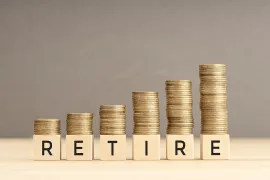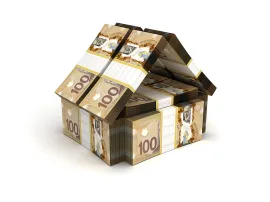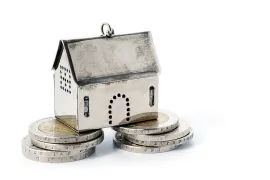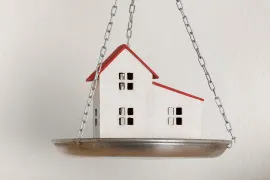For this Ontario woman, family considerations may tilt the balance of important financial decisions
If Ravenna continues to reject equity returns and keeps her savings in low-yield bank deposits, her future will be bleak. But, adding to her equity investments would provide liquidity and asset growth

Ravenna’s pre-tax and pre-deductions income is $105,000 per year.
Author of the article: Andrew Allentuck
In Ontario, a woman we’ll call Ravenna, 57, brings home $5,140 per month from her job as a health-care professional. She wants to retire at 60 or 65, depending on which date will enable her to build sufficient savings to cover her expenses. She has two financially independent children, one living abroad. Ravenna hopes he will come to Canada and perhaps live in one of her properties, but no decision has been made.
Ravenna’s pre-tax and pre-deductions income is $105,000 per year. Her assets at present total $1,839,000 and all but $89,000 of that is real estate. Both her home and rental have benefitted from soaring real estate prices. Her rental provides a return on equity of 3.89 per cent per year. She might get higher yield and reduce her hefty investment in real estate by selling the rental, but there would be a $300,000 capital gain, half taxable.
Family Finance asked Derek Moran, head of Smarter Financial Planning Ltd. in Kelowna, B.C. to work with Ravenna.
Keep the rental or sell
“Her marginal tax rate is 33.89 per cent so her post-tax return on equity is about 2.5 per cent, lower than her 2.76 per cent mortgage rate,” Moran explains. “Sale of the rental would harvest gains and provide cash to pay off the mortgage.” The best move to raise retirement income is to sell. But there is more involved than money.She could use her $70,000 of RRSP space in the year of the sale of to shelter some income. But if she waits to 65 to do the sale and capture a big capital gain, she will lose her OAS to the clawback, which currently begins at $79,054 and takes 15 per cent of the benefit over that sum.
If Ravennna sells the property this year for $500,000 and has 5 per cent selling costs, her proceeds would be $475,000. The capital gain would be $275,000 and half, $137,500 would be taxable. Her present gross income is $105,000, $90,000 after various pension and other deductions. Her taxable income would be $227,500. Taxes would rise by $63,487 from $19,870 at present rates to $83,357.
If she makes the full $70,000 RRSP contribution, it would reduce income from $227,500 to $157,500 and the tax bill would drop to $49,012, Moran explains. With these numbers, she would get a 49 per cent tax refund on the RRSP contribution.
Her net proceeds would be $475,000 minus $29,142 extra tax after the RRSP contribution of $29,142. That would leave $445,858, $70,000 of which would be in her RRSP and $375,858 cash. That cash could be used to pay off her $374,000 home mortgage. She would lose $18,472 net rental income, but her $19,200 mortgage cost would be history.
Investments and returns
She has $89,000 in her RRSPs now allocated $70,000 to low-interest GICs that are free of market fluctuation and $19,000 to a mix of stock mutual funds. The RRSP might grow at inflation plus one per cent, not very much. Assuming she adds $6,000 per year, it would become $116,354 in three years at age 60. At 65 with five more years of contributions, it would rise to $167,697 and pay $9,350 per year for 25 years.If she sells the rental, the new $70,000 contribution would raise current balance to $159,000, and she could expect a decent increase in the annual payouts, if she continues to contribute.
Pension math
In retirement at 60, Ravenna will have an annual base defined benefit work pension of $7,781 with an annual bridge supplement of $3,534 to 65, total $11,315 per year. Working to 65 would raise the pension to $17,411 per year.CPP benefit would pay $7,945 per year for retirement at 60 and payments starting at 65. If she works to 65 and makes further contributions to CPP, she would earn another 2.5 per cent per year or a 12.5 per cent increase to $9,823 per year.
At 65, she will have been a resident of Canada for 27 years and be eligible for 27/40ths of the full $7,380 OAS benefit or $4,982 per year.
Keep the rental
If Ravenna retires at 60 and keeps the rental and invests at 1 per cent over inflation, she would have $11,315 from her pension and bridge, $5,763 from her RRSP and rental income of $18,472. That adds up to $35,550. After 13 per cent average tax, she would have $2,577 to spend each month. That would not sustain current spending.Retiring at 60 but starting CPP and OAS at 65, she would lose her $3,535 bridge. Her pension would drop to $7,781. She could add $7,945 from CPP and $4,982 from OAS. She would have $5,763 from her RRSP plus rent of $18,472. That would push income up to $44,943. After 14 per cent average tax, she would have $3,220 per month to spend, still below current spending.
If she retires at 65, Ravenna would have $17,411 from her work pension, $9,283 from CPP, OAS of $4,982, $9,350 from her RRSP, and $18,472 from the rental. That’s a total of $59,498. After 15 per cent average tax, she would have $4,214 per month to spend. With neither mortgage debt nor RRSP contributions, her allocations could drop to $3,040 per month. She would be in the black with cash to spare.
The net effect of sale is loss of annual net rental income of $18,472 but elimination of almost all her $19,200 annual mortgage expense. She could match the present 3.69 per cent return on equity from the rental with large cap stock dividend growth and price appreciation. Most of her RRSP is effectively in cash. If she continues to reject equity returns and keeps her savings in low-yield bank deposits, her future will be bleak, Moran explains. Ravenna can add to her equity investments. That would provide liquidity and asset growth. The surplus could go to a Tax Free Savings Account. She has none now.
The rental could be a home for her son living abroad if he returns to Canada. Selling the rental can raise her investment income. The drawback to keeping the rental is very high allocation to property. But in the end, family may win over finance.
Retirement stars: Four retirement stars **** out of Five
Financial Post
( C) 2021 The Financial Post, Used by Permission

































